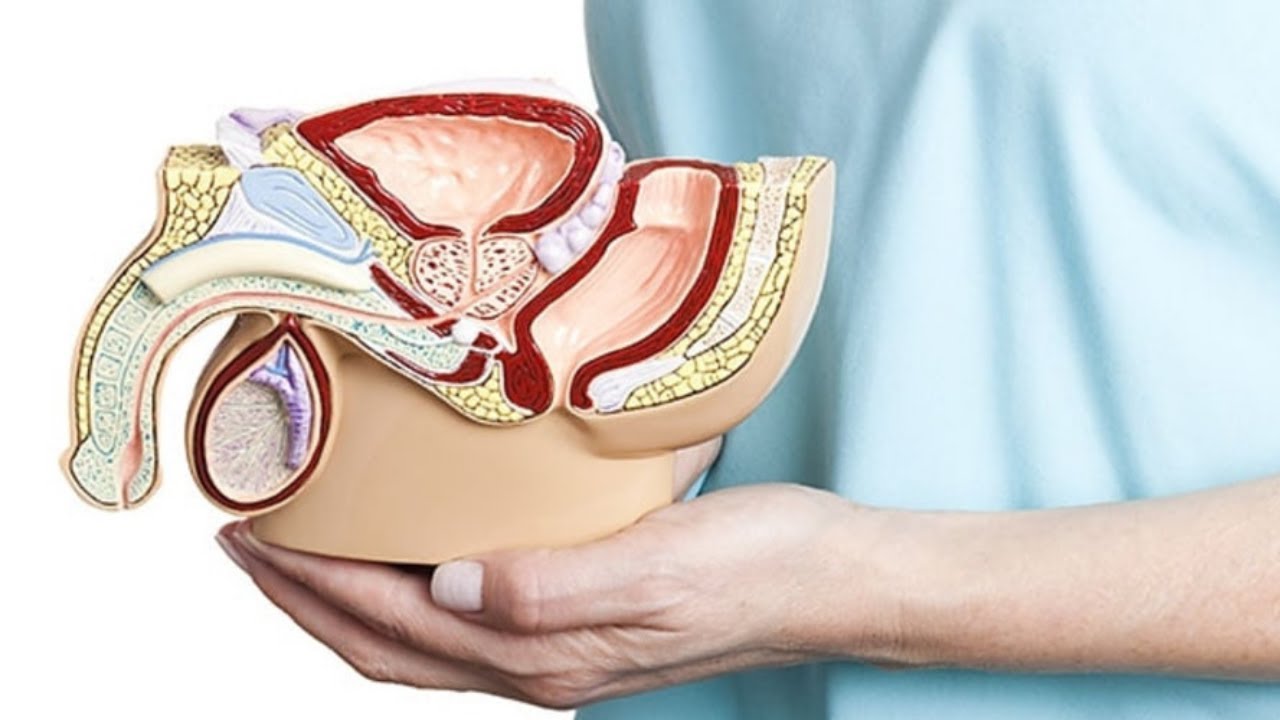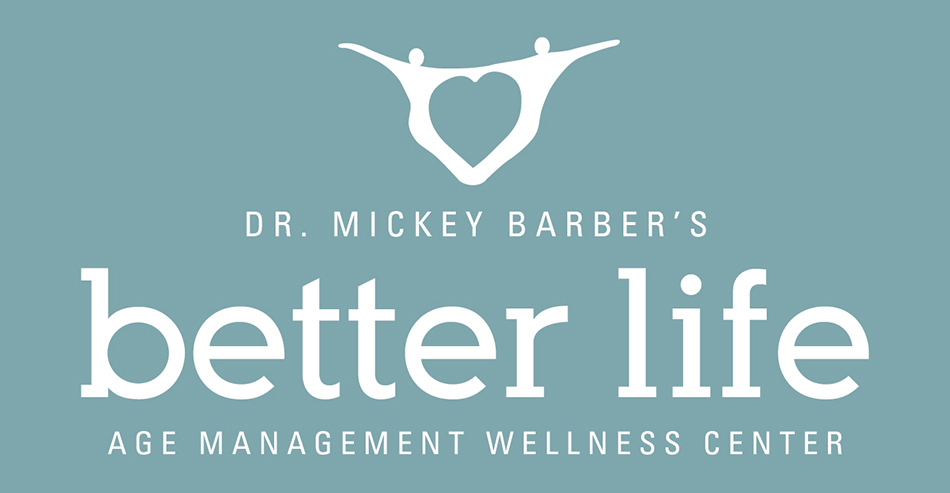Quick Quote
Few things are guaranteed in life, but there is one thing that you can count on for sure: as time goes on, your body is going to age. While most men in their late teens through their twenties might feel invincible, it's only a matter of time before age starts to play a role in everyday life. Injuries take longer to recover from, hangovers take longer to dissipate, aches and pains become a normal part of life, and intimate time with your partner can be compromised. If you have experienced any of the symptoms above, don't worry - it's completely normal to slow down as you get older.
The question is, what are you going to do about the aging process? For years, men were told to just "live with it". The time to fight back is here, and there has never been a better opportunity to live your best life than now. Nobody understands the effects that aging can have on men but our team of professionals at Better Life do. That is why we invest all of our time developing innovative, effective men's health solutions: to give men a chance to change their future and live like they did while they were in their prime. If you're ready to take a stand against ED and live a more energetic, youthful life, know that you're not alone. At Better Life Carolinas, we are here to help by providing the most scientifically advanced treatments on the market today.
Service Areas
GAINSWave® Treatment In Charleston, SC
When it comes to men's health, the topic of sex can still feel taboo, especially when there are performance issues involved. At Better Life Carolinas, we have heard just about every story you can imagine regarding erectile dysfunction or ED. So if you're embarrassed and angry about your performance in the bedroom, we understand how you're feeling. In the past, men had to take strange drugs or sign off on expensive surgeries to help correct their ED, adding to their feelings of shame and hopelessness.
The good news? If you're a man dealing with ED, you don't have to settle for antiquated treatments like those referenced above. There's a new product on the block: a revolutionary, non-invasive treatment that is the first of it's kind. It's called GAINSWave®, and you can bet your bottom dollar that it isn't like anything else you have tried before.
Unlike most ED treatments, this unique approach does not require drugs or surgery. Instead, it relies on high-frequency acoustic waves to open the penis's existing blood vessels, encouraging the growth of new blood vessels while eliminating micro-plaque. To put it simply, GAINSWave® increases blood flow and gives you a chance to reclaim your libido and live life like a man in his prime.
GAINSWave® isn't a sketchy, quick-fix pill found behind the glass at a gas station. It is a comprehensive erectile dysfunction treatment with an incredible 76% success rate. With virtually no side effects, it's no wonder that men throughout the Carolinas and across the United States trust GAINSWave® to solve their ED and Peyronie's disease problems.


How GAINSWave® Works
It might sound like GAINSWave® is too good to be true, but the fact is this kind of erectile dysfunction treatment in Charleston, SC uses scientifically-backed, time-tested technologies and applications to improve male sexual performance. Technically referred to as Low-Intensity Extracorporeal Shockwave Therapy (LI-ESWT), our GAINSWave® procedure goes right to the crux of the issue. Low-intensity sound waves break up plaque formation in your penis while stimulating new blood vessel growth. These new blood vessels help get more blood to your penis, ultimately improving your ability to perform. This incredible treatment not only increases blood flow - it also causes new nerve tissues to grow, making your penis more sensitive and easily stimulated.
It all happens through a process called neurogenesis, which increases penis sensitivity. What sets GAINSWave® apart from others is the use of low-intensity sound waves to achieve increased blood flow and sensitivity. Because this procedure is completely non-invasive, you won't ever have to worry about expensive insurance claims or unsightly scarring. All you have to worry about is enjoying life like you used to, without having to undergo surgery or putting harmful substances in your body.
Here are some quick facts about Better Life Carolinas GAINSWave® treatments:
- For most men, you can expect to have between 6 and 12 GAINSWave® sessions
- Sessions typically take 15 to 20 minutes.
- GAINSWave® works by releasing growth factors in your penis tissue, which generates new blood vessels.
- GAINSWave® promotes healthy blood flow by breaking up plaque formation, giving men harder, stronger erections for longer periods of time.
- GAINSWave® also activates dormant stem cells, which leads to new cell growth in men.
Hidden Risks of Prescription Erectile Dysfunction Treatment
If you have ever wondered why GAINSWave® treatments are so popular with men, the answer is simple. Prescription drugs meant to help ED often come with side effects that can diminish your peace of mind and day-to-day life. While some men swear by the "little blue pill," many guys aren't aware of the hidden risks associated with drugs like Viagra. The following ailments can happen both in the short term and long term:
- Back Pain
- Muscle Pain
- Headaches
- Vision Loss
- Rashes
- Respiratory Issues
- Hearing Loss
- Dizziness
- Upset Stomach
- Ringing in Ears
- Fever

If you are having problems with erectile dysfunction, you should understand why it's happening. The primary cause of ED is associated with a lack of blood flow to the penis, making erections difficult to get and maintain. Rather than relying on a prescription pill for a quick fix, many men are using GAINSWave® treatment in Charleston, SC for a natural solution with no ill side effects. ED doesn't have to be your "new normal," and neither does suffering from strange side effects from popping too many "little blue pills."
GAINSWave®, COVID-19, and ED
The global COVID-19 pandemic has had a profound effect on the world. Over the last year, millions of Americans have had to change their lifestyles and alter daily routines to better protect themselves and their loved ones from the virus. While COVID-19 causes a litany of negative side effects, new research shows that men who contract the virus can triple their risk of developing erectile dysfunction. Because the human body is unfamiliar with this kind of virus, it responds by sending a large immune response. During this process, the body uses massive amounts of chemicals to eliminate the virus, causing horrible collateral damage in the form of cell destruction and inflammation.

Contracting COVID-19 and suffering from ED at the same time might sound like a death sentence. However, if you are a man experiencing ED during or after contracting the COVID-19 virus, don't lose hope.
Clinical trials have shown that shockwave therapy, better known as GAINSWave®, has been shown to lower inflammation and boost vascularity by creating angiogenesis and improving endothelial function. Simply put, GAINSWave® treatments can help reverse symptoms of ED brought on by COVID-19. To learn more about how GAINSWave® can help you get back to a normal sex life after developing COVID-19, we recommend contacting our office today.
GAINSWave®: A Natural, Non-Invasive Treatment for Peyronie's Disease
Though Peyronie's Disease affects about 9% of men, it is a little-known disease that can cause physical and aesthetic issues. It is characterized by fibrous scar tissue, which forms underneath the surface of a man's penis. When this disease is left untreated or treated improperly, it can be very difficult for men to have a normal erection. This is because Peyronie's Disease can cause painful curvatures in the penis, making it nearly impossible for afflicted men to have sexual intercourse at all.
The cause of Peyronie's Disease is currently unknown. However, most cases stem from physical trauma like acute injuries after vigorous sex. Other causes include prostate surgery, autoimmune disorders, and family history. Unfortunately, traditional treatment options range from a "wait and see" approach to prescription drugs and even surgery.
Symptoms and signs of Peyronie's Disease include:
- Erectile Dysfunction: Men with this disease may have problems achieving or maintaining erections.
- Misshapen Penis: Some men with this disease suffer from a narrowing of the penis when erect, resembling an hourglass shape.
- Notable Bend in Penis: One of the most common symptoms of Peyronie's Disease includes significant penis curvature, which is defined by a severe and unnatural bend.
- Scar Tissue: A common symptom of this disease is bands of tissue or hard lumps underneath the skin of the penis.
- Shortened Penis: Some men with this disease have reported a reduction in penis length.
- Pain in Penis: Peyronie's has the potential to cause pain in a man's penis, regardless of whether he has an erection or not.

Fortunately, for men who are looking for a non-invasive, natural erectile dysfunction treatment in Charleston, SC GAINSWave® is the answer. Using low-strength soundwaves or shockwaves, GAINSWave® treatment in Charleston breaks down scar tissue affecting your penis, helps create new blood vessels, and opens up existing ones. As a result, blood flow is increased, which minimizes penis curvature and fixes the problems associated with erectile dysfunction.
P-Shot® Erectile Dysfunction Treatment in Charleston, SC
Most guys will tell you that their penis is the most important part of their body. While that is not totally true from a physiological perspective, we get where they're coming from - after all, a man's penis plays a big role in his personal life and overall wellbeing. When a man has problems achieving and maintaining an erection, his quality of life can suffer dramatically, resulting in lower self-esteem and even depression. If you are a man and suffering from ED or Peyronie's Disease, you can rest easy knowing help is only a phone call away.

In addition to GAINSWave® treatments, Better Life Carolinas also offers the Priapus Shot or P-Shot® for short. Originally used to treat wounds and sports injuries, our P-Shot® is an all-natural treatment that fortifies your body through cellular repair and rejuvenation. P-Shot® treatments have shown very promising results for men who have suffered from prostate cancer, enlarged prostates, the side effects of surgery, drug side effects from prescription pain killers, and even diabetes.
You might be asking yourself, "How does the P-Shot® work?"
This ED solution works by using platelet-rich plasma or PRP from your own body. The proteins and growth factors released by the large number of platelets activate your stem cells, which begins cellular regeneration and repair wherever the PRP are used in your body. Tissue repair in your penis is further aided by the formation of new blood vessels and collagen production.
In many cases, men who use the P-Shot® to correct erectile dysfunction or the effects of Peyronie's Disease can resume sexual activity a few hours after the treatment is applied.
Benefits of Better Life Carolinas' P-Shot® include:
- Increased blood flow to the penis
- Improved stamina during sexual activities
- Improvement and possible resolution of penile curvature issues caused by Peyronie's Disease
- Increased penis sensitivity
- Improvements to penis girth and length
For more information about the Priapus Shot or to find out if this treatment is right for you, schedule your free consultation today.
Contact UsLatest News in Charleston, SC
Parker's Kitchen opens latest Charleston store; NY fashion label comes to King Street
Teri Errico Griffishttps://www.postandcourier.com/business/charleston-parkers-kitchen-coffee-johns-island-restaurant-farmers-market/article_668c48fc-f5a5-11ee-b8ec-4f45d3dc9d9b.html
Keep up with the comings and goings in the region this week with a new gym, coffee shop, ...
Keep up with the comings and goings in the region this week with a new gym, coffee shop, retail center and the return of the Charleston Farmers Market.
Greg Parker, owner of Parker's Kitchen was on hand to mark the opening of his company's latest West Ashley convenience store and service station this week. He cut the ribbon for the 1776 Ashley River Road location at the Sam Rittenberg Boulevard intersection, alongside his daughter Olivia Parker, employees and others.
The Savannah-based chain, which has opened more than dozen locations in the Charleston region, is also celebrating another milestone this week: advancing to the final round in Garden & Gun magazine's best biscuit competition. The retailer’s signature sausage, egg and cheese combo faced off against Tudor’s Biscuit "World Mountaineer," taking second place honors April 10.
Moving into Maybank
A build-to-suit development will provide even more business amenities to Johns Island.
The 55,000-square-foot Southside Station, formerly Maybank Station, is planned for Maybank Highway and Slack Tide Drive — the entrance to the future Lowtide Brewery.
The development by Greenville-based Fox Commercial Properties will be built in phases with two buildings for medical use set to break ground this summer. They will measure roughly 14,000 square feet and 18,000 square feet. Phase two will include four more buildings, as of now, designed for retail, restaurants and other services.
Burger bite
The sale of the former Laura Alberts Tasteful Options restaurant on Daniel Island has closed.
Carolina Burgers II LLC purchased the space at 891 Island Park Drive for $2.4 million from Leke Properties LLC, according to buyer representative Mandy Coleman of National Restaurant Properties. The seller was represented by Tim Rogers of The Peninsula Co.
Laura Alberts, which was opened by Laura Leppert and Karen Elsey in 2002, closed March 15.
The new property owner plans to open a second location of Heavy’s Barburger in the space this summer. The first opened at 1137 Morrison Drive on the peninsula in mid-2022.
In the market
The Charleston Farmers Market resumes operations this weekend at Marion Square in downtown Charleston.
Featuring fruits and produce from local growers, handcrafted drinks, prepared foods and locally made arts and crafts, the event runs from 8 a.m. to 2 p.m. every Saturday through December.
Similarly, the West Ashley Farmers Market will pick back up on April 24 and run from 3 to 7 p.m. every Wednesday at 55 Sycamore Ave.
NY on King
Fashion label Rag & Bone New York will open its first South Carolina location in downtown Charleston next month.
The retail space at 363 King St. between George and Calhoun streets is currently under renovations.
Originated in England, the brand is sold in more than 700 shops around the world and roughly 50 namesake stores.
Free for all
Treat yourself to something sweet next week.
Ben & Jerry's annual cone giveaway takes place April 16, and one of its participating "scoop shops" is at Freshfields Village on Kiawah Island.
The ice cream giant's stated goal is to reach 1 million servings during the annual promotion. The company, now part of consumer-goods giant Unilever, started the one-day giveaway in 1979 to mark the first anniversary of its first store in Burlington, Vt.
Fill'er up
Grab a cup o' joe for the road at Monck Corner's newest coffee stop.
Bikerlife Coffee Haus at 1010 Old Highway 52 serves up hot drinks, sweet pastries, fresh doughnuts, mini cupcakes and more to sate your appetite. Hours are 7 a.m. to 4 p.m. on weekdays, 9 a.m. to 3 p.m. on Saturdays.
Bikerlife is closed on Sundays.
Shaping up
New Year's Resolutions have probably long been forgotten, but there's no time like the present to focus on your health and join a new gym.
Audacity Fitness, recently opened at 4540 Rivers Ave. in North Charleston with a focus on group-class fitness. Class types include CrossFit, strength and conditioning and fitness for ages 50+. Personal training sessions are also an option.
Owner Katie Flaherty said she plans to expand offerings with skill clinics, community events, fundraisers, specialty courses and more at the gym.
Our twice-weekly newsletter features all the business stories shaping Charleston and South Carolina. Get ahead with us - it's free.
LouCity suffers first setback of the season in 3-2 loss at Charleston
Tyler Greeverhttps://www.wdrb.com/sports/loucity-suffers-first-setback-of-the-season-in-3-2-loss-at-charleston/article_62489818-f6e5-11ee-b7ba-a3a4fdbb3133.html
LOUISVILLE, Ky. (WDRB) - With a chance to get off to the best start in club history, Louisville City FC instead suffered its first loss of the season.LouCity fell 3-2 on the road against the Charleston Battery on Tuesday night in a game where Louisville quickly took a lead. The problem was a goal in the opening 10 minutes was the only highlight from a first half that saw Charleston have 61.4% of the possession.“I thought we were completely out-performed in the first half — nowhere near good enough,” LouCity he...
LOUISVILLE, Ky. (WDRB) - With a chance to get off to the best start in club history, Louisville City FC instead suffered its first loss of the season.
LouCity fell 3-2 on the road against the Charleston Battery on Tuesday night in a game where Louisville quickly took a lead. The problem was a goal in the opening 10 minutes was the only highlight from a first half that saw Charleston have 61.4% of the possession.
“I thought we were completely out-performed in the first half — nowhere near good enough,” LouCity head coach Cruz said. “I thought we made really good adjustments at halftime, got into the players a little bit and had an excellent response in the second half. I thought it was a tale of two halves. I thought we were the better team in the second half, and they certainly were the better team in the first half.”
This match marked the first time Louisville, who is now 4-1 on the year, had trailed all season. Jorge Gonzalez opened the scoring off a corner kick to give LouCity an 1-0 lead before MC Myers responded for Charleston a minute later. Nick Markanich's brace proved to be the difference, as his penalty kick gave the Battery the lead in the 22nd minute before he scored again on a rebound opportunity in the 30th minute to make it 3-1.
To Cruz's point, Louisville did respond well against a side that now sits atop the Eastern Conference standings in the USL Championship. He made three substitutions at halftime after trying a new lineup, since LouCity had a quick turnaround for an away match after just beating Indy Eleven at home on Saturday. A new face in midfielder Taylor Davila was able to pull Louisville within one goal by finding the back of the net in the 52nd minute.
“We knew when we came in at halftime it wasn’t good enough,” LouCity midfielder Taylor Davila said. “From an energy standpoint and from a technical standpoint, we just weren’t doing the little things we needed to do. At halftime we made changes, and we just really had energy. We looked confident. We were playing through them and dangerous.
“I definitely feel like we could have tied the game up or even won. That’s how well we played in the second half. I’m definitely bummed we didn’t come out like that in the first half, but it’s a good learning experience.”
Louisville gets some time off before returning to action on April 16 for a third-round match in the Lamar Hunt U.S. Open Cup vs. Greenville Triumph SC at Lynn Family Stadium. But Cruz wants his group to remember how it responded in this loss so LouCity can find the form from its first four matches again.
“We talked a ton, and have continued to talk a ton about complacency and making sure it doesn’t set in,” Cruz said. “I thought in the first half, it did. And I thought the response to the adversity from the first half to the second half was excellent.”
Copyright 2024 WDRB Media. All Rights Reserved.
Fayetteville Frustrates RiverDogs in Series Opener
Charleston RiverDogshttps://www.live5news.com/2024/04/10/fayetteville-frustrates-riverdogs-series-opener/
Fayetteville, NC - A towering pop up fell between two Charleston RiverDogs infielders to begin the bottom of the second inning on Tuesday night at Segra Stadium. From that point forward, everything went downhill in the team’s first road game of the season. The Fayetteville Woodpeckers collected nine hits and their pitching staff piled up 16 strikeouts in a 9-3 win.The previously mentioned second inning proved disastrous for the RiverDogs (2-2). The first pitch of the inning from T. J. Nichols was popped high into the air on the ...
Fayetteville, NC - A towering pop up fell between two Charleston RiverDogs infielders to begin the bottom of the second inning on Tuesday night at Segra Stadium. From that point forward, everything went downhill in the team’s first road game of the season. The Fayetteville Woodpeckers collected nine hits and their pitching staff piled up 16 strikeouts in a 9-3 win.
The previously mentioned second inning proved disastrous for the RiverDogs (2-2). The first pitch of the inning from T. J. Nichols was popped high into the air on the third base side. Ricardo Gonzalez crossed into foul territory only to have the ball drop behind him just inside the foul line for a base hit. Nichols was thrown off by the miscue, walking the next three hitters to force in the game’s first run. Will Bush and Kenni Gomez followed with consecutive RBI singles, expanding the lead to 3-0. Engert Garcia replaced the starter with the bases still loaded and induced a double play and a pop out to end the inning.
With the Charleston offense struggling to find its footing, Fayetteville (3-1) added to their advantage in the fourth. In his third inning on the mound, Garcia walked Alberto Hernandez to begin the stanza. Gomez singled with one out and a wild pitch advanced runners to second and third for Waner Luciano. The third baseman hooked a double down the left field line to score both and make it 6-0.
Failing to score with a bases loaded opportunity in the fifth inning, the RiverDogs cashed in for the first time in the sixth. Ricardo Gonzalez opened the inning with a solo home run over the right field wall. Tre’ Morgan immediately followed with a base hit and raced all the way to third on Raudelis Martinez’s double down the right field line. Carlos Colmenarez worked a walk to load the bases and Noah Myers drove in a second run with a fielder’s choice bouncer to second.
Fayetteville blew the game open against Gerlin Rosario in the seventh. The right-hander hit Xavier Casserilla with his first offering of the frame and followed that with a walk of Waner Luciano. An infield hit by Nehomar Ochoa loaded the bases with just one out. Hernandez took advantage by lining a two-run single into right field and the gap widened to 9-2.
Nichols took the loss after allowing four runs in the second inning without recording an out. He allowed three hits and also issued three free passes. Owen Stevenson was impressive bouncing back from a challenging first outing over the weekend. The reliever out of Arizona State worked 2.1 scoreless innings. Fayetteville starter Derek True was phenomenal, striking out seven over 4.2 innings.
Gomez paced the Woodpeckers from the top spot in their lineup, going 3-5 with two runs batted in. Hernandez chipped in three RBI with a single and two walks. The RiverDogs finished with seven hits, one each from seven different players.
Copyright 2024 WCSC. All rights reserved.
Charleston pioneers elevation-based zoning in response to rising sea levels
Claire Weberhttps://abcnews4.com/news/local/charleston-pioneers-elevation-based-zoning-in-response-to-rising-sea-levels-south-carolina-enviornmental-news-abc-wciv-2024
King Street in downtown Charleston, the site of Charleston Mayor William Cogswell's safety initiative plan to create a safer nightlife. March 6, 2024. (Claire Weber/WCIV)CHARLESTON, S.C. (WCIV) — Changes are coming to the City of Charleston’s zoning code.The existing code affects all developments in the city: commercial and residential. However, it hasn’t been updated in more than five decades.“Our existing zoning ordinance is many decades old, so the whole thing needs to be updated, brought into ...
King Street in downtown Charleston, the site of Charleston Mayor William Cogswell's safety initiative plan to create a safer nightlife. March 6, 2024. (Claire Weber/WCIV)
CHARLESTON, S.C. (WCIV) — Changes are coming to the City of Charleston’s zoning code.
The existing code affects all developments in the city: commercial and residential. However, it hasn’t been updated in more than five decades.
“Our existing zoning ordinance is many decades old, so the whole thing needs to be updated, brought into the 21st century, graphics added, make it much more user friendly,” said Christopher Morgan, planning manager for the city’s planning department.
Charleston has had the same city zoning code since 1966. Now, officials plan to make necessary changes focusing on the city’s future development.
“Most of this deals with when you're expanding your business or expanding your house,” Morgan explained. “Or building a new house, new business or a new neighborhood.”
Arguably the biggest change to the zoning code is one city leaders hope helps guide new development as sea levels continue to rise. The new code will include elevation-based zoning to combat increased flooding.
It comes less than a month after Mayor William Cogswell announced a new flooding plan to increase preparation ahead of severe weather.
“What this plan is, is an effort to put in some temporary solutions to allow us to frankly live with water for a little while until we get more permanent solutions in place,” Mayor Cogswell said in a press conference on March 13.
City officials hope these zoning changes will be one of those permanent solutions.
The updates call for less future development in areas of lower elevation or that are closer to sea level.
“There's very extensive mapping that's done in our comprehensive plan that shows the areas that have better elevation and worse elevation, and the worse elevation areas have more potential for impact by rising water,” Morgan said.
The updated code would push for higher-density development to strictly pop up in areas with better elevation. Morgan believes Charleston will be the first place to establish a city-wide elevation zoning code.
The city is hosting a public meeting on Wednesday at 5 p.m. at the International Longshoremen’s Association Hall on Morrison Drive to present the proposed changes and receive public feedback.
City officials don’t expect the new ordinance to reach the city council for a vote until the end of the year.
Commentary: We plan to make Columbus Street Terminal more resilient, not sell it
Barbara Melvin and Bill Sternhttps://www.postandcourier.com/opinion/commentary/sc-ports-columbus-terminal-union-pier-charleston/article_8ad2e58e-f674-11ee-88a9-cf8cf4586cf7.html
A recent editorial in The Post and Courier suggested it’s time for Charleston to start planning for what it called our eventual abandonment of the Columbus Street Terminal. We want to be clear: This does not align with our business goals, and we have no plans to sell this site.At a time when port cities up and down the East Coast, including ours, are stepping up to handle additional business due to the Baltimore bridge tragedy, the editorial left the impression that we are lessening our commitment to our mission. Nothing could b...
A recent editorial in The Post and Courier suggested it’s time for Charleston to start planning for what it called our eventual abandonment of the Columbus Street Terminal. We want to be clear: This does not align with our business goals, and we have no plans to sell this site.
At a time when port cities up and down the East Coast, including ours, are stepping up to handle additional business due to the Baltimore bridge tragedy, the editorial left the impression that we are lessening our commitment to our mission. Nothing could be further from the truth.
As the eighth largest port in the country, we consistently shift our operations to find creative solutions, which is exactly what we are doing with Columbus Street Terminal.
We are taking proactive steps to invest in infrastructure to strengthen our resiliency against rising sea levels and severe weather events. We are all learning to live with water in Charleston. It would be irresponsible to do otherwise.
The S.C. Ports Authority is a critical supply chain partner to our state’s automotive industry and has been for decades.
Since 2011, we have expertly handled nearly 3 million vehicles at Columbus Street Terminal for global automakers. We moved more than 200,000 vehicles last year alone. We are constantly evaluating our operations and infrastructure to ensure our shippers’ businesses succeed.
We have invested in modernizing the terminal over the years, including enhanced rail connections and raising the terminal’s height to better support the automotive sector’s supply chain. The automotive industry growth in our state was the catalyst for opening our first rail-served inland port in Greer.
Our many port investments have helped to facilitate South Carolina’s unmatched success in the nation as the top exporter of both vehicles and tires.
And we will always evaluate port infrastructure to best support port-dependent businesses and create jobs for South Carolinians, while also working alongside the communities and municipalities in which we reside.
As you have seen throughout the very public Union Pier process and pending sale to Charleston businessman Ben Navarro, we take our commitment to the Charleston community very seriously. We have demonstrated that we will work alongside the city of Charleston as our future needs present themselves and in a way that is mutually beneficial.
And that is exactly what our investment into Columbus Street Terminal is about: strengthening resiliency and planning for the future. That’s something to celebrate about one of our most critical assets.
Barbara Melvin is president and CEO of SC Ports, and Bill Stern is its board chair.
Disclaimer:


Copyright 2024 by Dr. Mickey Barber's Better Life
 843-737-2597
843-737-2597